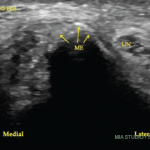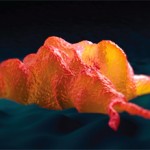Thus, the blood vessels appeared to not only relieve hypoxia in the wound, but also provide a scaffold for the migration of Schwann cell cords and the axons regrowing across the wound. The researchers concluded that the blood vessels and bridge structure must be built accurately and efficiently to create effective regeneration of peripheral nerves.
Lara C. Pullen, PhD, is a medical writer based in the Chicago area.
ad goes here:advert-1
ADVERTISEMENT
SCROLL TO CONTINUE
Reference
- Cattin AL, Burden JJ, Van Emmenis L, et al. Macrophage-induced blood vessels guide Schwann cell–mediated regeneration of peripheral nerves. Cell. 2015 Aug 27;162(5):1127–1139. doi: 10.1016/j.cell.2015.07.021. Epub 2015 Aug 13.



